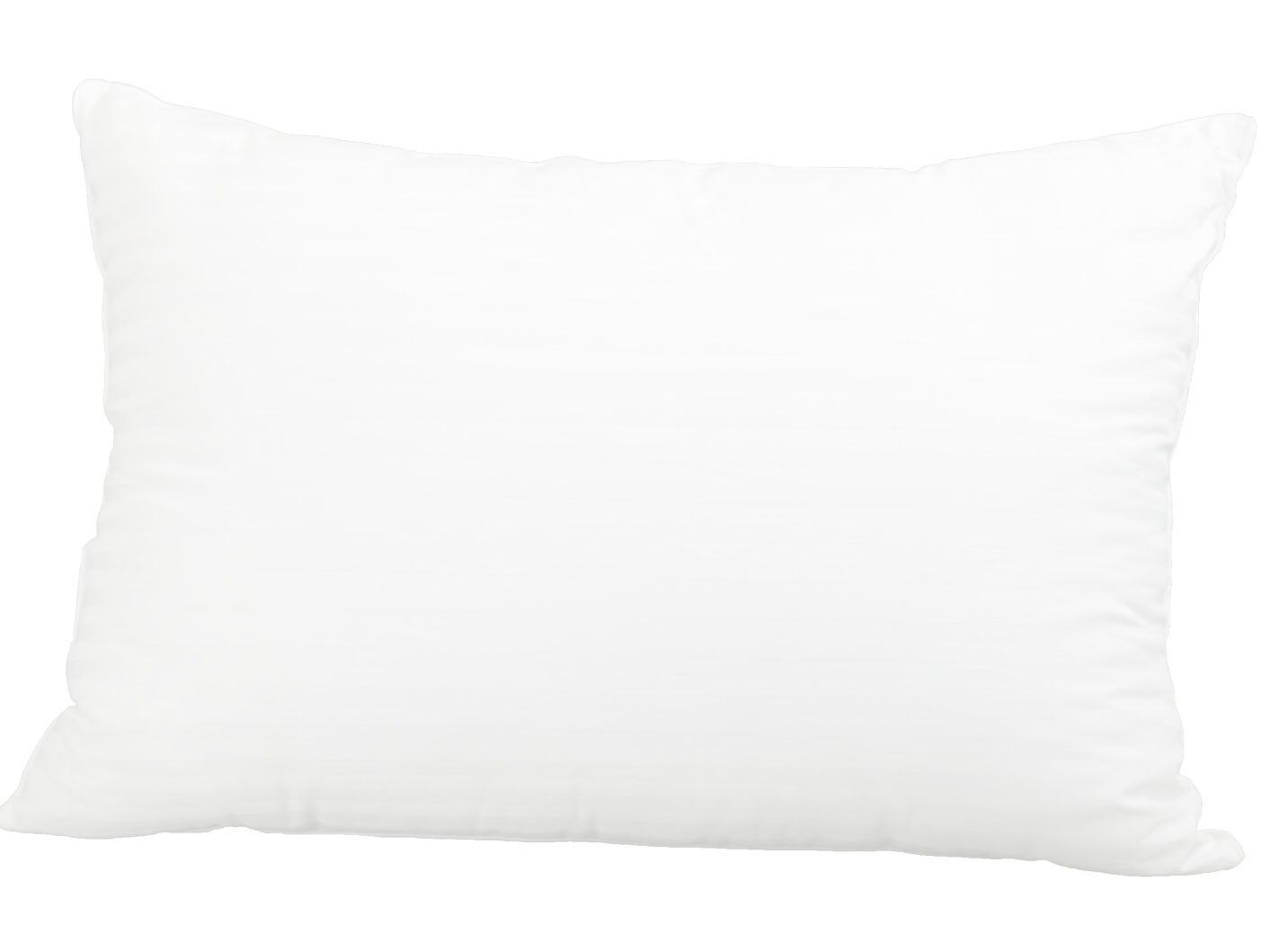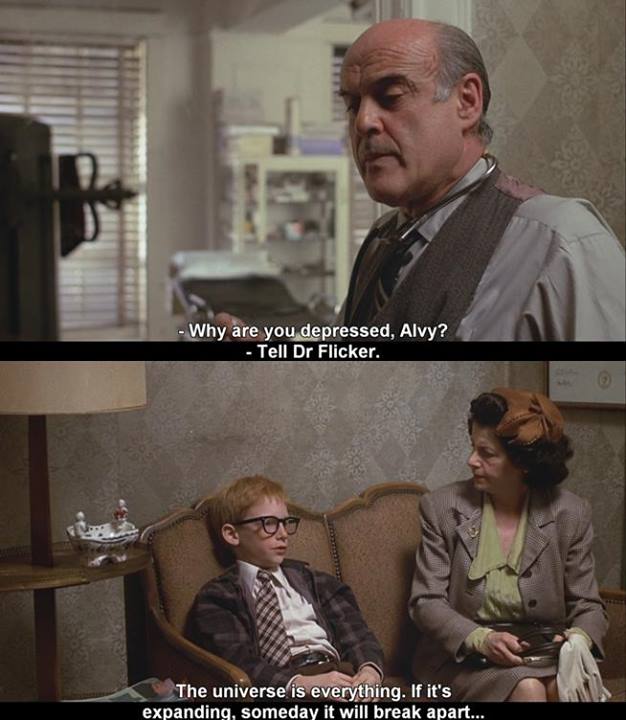
i. What’s eating you? (- or living with excuses)
Opening scene of the movie Sex, Lies and Videotape, the protagonist Ann talks to her doctor about her growing worries over garbage.
“Garbage. I started thinking about what happens to all the garbage. I mean, where do we put all of it, we have to run out of places to put it eventually, don't we? … I try not to do anything that will produce garbage, so obviously we're talking about eating and basic stuff like that. Did you know that the average person produces three pounds of garbage a day? ... Don't you think that's a lot of garbage? I'd really like to know where it's all going to go.” [2]

True to form, the story goes on about persona, desire and sexuality. Naturally, what triggers Ann’s mood, concerns and obsessions is a reflection of (or perhaps transcribed into) her response towards something inevitably negative, but something she could not possibly have any control over. The garbage problem, therefore, although urgent and provokes real anxiety in modern lifestyle, is merely a decoy of matters which are buried deeper and seemingly more important. It is safe to assume that the garbage problem can easily show up as any other problems for Ann, who constantly and chronically delays her attentions towards her feelings.
It’s one thing to procrastinate, entirely the other, when existential crisis becomes your priority.
Sex, Lies and Videotape is made in 1989. In 2019, roughly one year after China stopped importing plastic scrap from north America, southeast Asian countries shipped thousands of tonnes of plastic wastes back to the U.S. and Canada, claiming they are “sick of the West’s trash”[3].
“Garbage… I mean, where do we put all of it, we have to run out of places to put it eventually, don’t we?”
For years, Asian countries have been importing, sorting, processing and recycling garbage for the West. Now without the Asian recyclers, and a proper domestic recycling system in place, huge amounts of potentially recyclable materials ended up in landfills. A container filled with, grows and overflows garbage, is not in one’s imagination as a distraction any more, but a bitter truthful reality of our living conditions.
Maybe it’s long overdue for us to be concerned about “I’d really like to know where it’s all going to go” as the more important aspect in life, because no amount of psychological analysis can mask, divert, interpret or deconstruct reality. Maybe someday we realize relationship problems pile up as a result of collective procrastination (not of a couple, but of mankind) -- “I think we need to take a break. I don’t think I can love you enough, because all that’s in my mind now is, all the boxes I folded into the recycling bin being dumped into landfills several miles from us. I mean…how can we ever sleep again, knowing this? It’s consuming me, the garbage. We consume, then there’s garbage, then it’s the other way around...To think a plastic straw will last longer than us....”
ii. What keeps you up at night? (-
or living abstractly)
Suppose we are preoccupied with certain thoughts - the less than perfect feedback you received from the morning presentation, that one last drink you probably should have avoided Saturday night, the opinions you felt forced to have in a conversation - each one more redundant than the other. Upon these personal sensations, are the uncertainties of the pandemic, the wildfire, the race issues and the election. Is there a limit to our compulsion, a hierarchical order to rationalize, or are we destined to be restless?
Via many, many of his movie characters, Woody Allen repeatedly asks the same question - the meaning of existence. Alvy Singer in Annie Hall, for instance, recalls being sent to a psychiatrist by his mother as a little boy. When asked about the reason for his depression, little Alvy answered,
“The universe is expanding. The universe is everything, and if it’s expanding, someday it will break apart and that will be the end of everything.”
“Why is that your business?” shouted his mother, and turned to the psychiatrist, “He’s stopped doing his homework!”

The very thought of mankind attempting at anything mystical is laughable, because we still bear so little knowledge after centuries of evolution. In Jewish culture, it’s Der mentsh trakht un got lakht[4]. In Taoism, it’s unreasonable worries[5]. Care for what you can so that you can be understood like your fellow mankind. Better yet, in our time, countless diversions and amusements bearing enriched meanings and the wildest imaginations are created for us. The eternal exploration for meaning is replaced with the disguise of endless pleasure. Remember the garbage problem? We might be able to settle that as well. Trash still clusters up at the coast and is dumped into landfills, but hey we are very likely to migrate to Mars, long before the universe breaks apart anyhow.
iii. Is comfort over simplified? ( -
or living, alarmed; physical barrier v.s. Emotional barrier)

A goodnight’s sleep is nearly unattainable. Already unable to let go of what’s been hidden so well during daytime - matters as complex as identity and life goals, or thoughts as ordinary as money and work - we now have to sleep on collective panics over either virus or politics, which essentially are the same thing.
The yearn for the care-free life is so strong that Comfort has become the ultimate analogy for everything. The perfect mattress, the light and pillowy dessert, the fluffiest pancake ever, the cloud-like texture…literally anything that we can think of as “comfort” calls for a softness, dreamlike state. To a greater extent, so much of ergonomic design has been shaped around the physicality of the human body, and how any design should perfectly serve the purpose of the human figure to be comfortable. It’s almost contradictory to remember, our neck grows stiffer and stiffer when our pillows are designed to be softer and softer. IIt is generalized that “a pillow is a support of the body at rest for comfort, therapy, or decoration” [6] . However, ancient man didn’t need the perfect anything to fall asleep, they just lay down on a surface, arms and branches are pillows if need be. In fact, men used to sleep with great precaution, for survival.
Early Egyptian headrests were usually carved from stones; centuries later the African tribal headrests still bear similar forms, but were constructed with a portable handle. Preliminary, headrests were a type of structural barrier, standing in between the minimal physical consolation and the vigilant cognitive mind. Almost an object of its own intention, the existence of the headrest itself is a reminder of the potentially uncomfortable, temporal dwelling situations. As a matter of fact, never get too comfortable, or you’ll be bitten by bugs or attacked by wild animals at night.
It is precisely at each sudden mid-night awakening that one has to realize the resemblance of a maternal bond with the wilderness of nature howling. Are we really short of one magic mattress or a perfectly fluffed pillow, or is “comfort” over simplified?
In Japanese culture, a particular type of high headrest named Takamakura was designed especially for Geisha. Typically with a cylindrical pillow filled with buckwheat tied onto a lacquered wooden base, sometimes embedding incense, Takamakura is intended for preserving the tidiness of hair, dress and makeup. Although buckwheat hulls are a common Asian pillow filling known to us now, and wood a recurring material for pillow-making, Takamakura, a pillow designed to the opposite of comfort, therapy or decoration, appears to be a peculiar device bundling up two distinct pillow forms together as something highly sculptural. The intensity of this stillness transforms again into an extended performance piece the moment when a Geisha lays her neck onto it.
The modern day pillow has more or less settled its form as a fabric case with some sort of soft infills - polyester, feather, foam, memory-foam and etc., each offering competitive levels of comfortness, despite the fact that “comfortable” is still an intimate and personal measurement that cannot be overwritten. The formality of a fun pillow fight at a city center or the anticipation of pillow talk summarizes our imagination towards the now nothing-out-of-ordinary object, and no one needs to have a second-thought about it.
In 1944, Bruno Munari published a radical photo essay, titled searching for comfort in an uncomfortable chair[12], the article critiqued the persistent hunt for new forms, in fields of interior design. Rather than spending time inventing new aesthetics for the bourgeoisie, he argued, it might be wiser to direct the research towards refining what already works.

Deriving from the common pillow vis-à-vis Bruno Murani’s reflection towards one exhausted man coming home from work finds the most vulgar chair comfortable, the sensation of comfort does not come from the object, but the force that connects the human body with the human mind. Any pillow is perfectly fine, from a functional standpoint. However, the amount of psychological comfort we need to live through many issues like garbage or expansion of the universe, is not a promise of a sweet dream, but something far more intangibly sturdy.
iv. A pillow of yellow beams ( - fabricated personality)

“Suppose for instance that we had developed our own physics and chemistry: would not the techniques and industries based on them have taken a different form, would not our myriads of everyday gadgets, our medicines, the products of our industrial art—would they not have suited our national temper better than they do? In fact our conception of physics itself, and even the principles of chemistry, would probably differ from that of Westerners; and the facts we are now taught concerning the nature and function of light, electricity, and atoms might well have presented themselves in different forms.” -- Junichiro Tanizaki, In Praise of Shadows.
Comfort has come to pass the original function of a pillow in lending a grip for a sense of security over the course of civilization, and has planted itself deeply in the form of pillow. It is not a contest between the Easterners and Westerners, but rather a conciliation between the past and the future.
Almost always intended as an object with impressive height made of firm materials, a pillow is a piece of instrument concealed with Chinese traditions throughout history, promised by philosophical values of Confucianism, Taoism, Legalism, Buddhism and Mohism. A great deal of proverbs and old aphorism associated with the disposition of pillow suggests an alerted state of being, issues warnings and conveys wisdom.
“圆木醒枕”(pronounced yuán mù jǐng zhěn)[13]- rest on a piece of round wood as pillow so as to wake up easily, for instance, connotes a hard-working, diligent lifestyle, since typically a well-built pillow is expected to be a cuboid form, a sturdy foundation responding to the squareness of the ground[14]. The application of wood as pillow, or pillow material is as primeval as the Chinese language itself.
The modern equivalent of pillow, or “枕头”(pronounced zhěn tóu), is only a term specified to express the object to rest one’s head on. In decomposition, the Chinese character “枕”(zhěn)[15], frequently used as a verb, is the action to rest on. The radical on the left, “木”, or wood, emphasizes on the material of making, whereas “冘” on the right, indicates the state of slackness. Evidently, the thing we call pillow or headrest, purposefully mirrors one’s intention in the action of sleeping.
One should never sleep too soundly, according to Chinese philosophy, not even for the wiser. Ultimately, the pursuit of virtue is beyond one’s home and the imperial court, and deep into the mountains, metaphysically in close proximity with Zarathustra[19]. Expressions such as “ 漱石枕流 ”(zhěn shí shù liú )[20], rest on stones and wash up in rivers and “枕山栖谷”(zhěn shān qī gǔ)[21], lay on mountains and live deep in the valley, not only depict an alternative lifestyle further away from the hierarchical society, but more importantly, performs a strong statement of benevolence and morality towards body, spirituality and nature.
v. Make a pillow of one’s spear
waiting for daybreak(- a designed state
of being)
With traditional Chinese painting and literature highly intertwined in aesthetics, as affected by Confucianism, A wide range of forms, shapes and motifs were shared among paintings, calligraphy, decorated artifacts, architecture and other creations of art.
Pines, bamboo, and plum trees, for instance, called “岁寒三友” (suì hán sān yǒu)[22] three friends of winter, were representations of “义”(yì), a Confucius guidance of loyalty. Bats, deer and peaches, often formulated together, narrating “福禄寿“(fú lù shòu), or happiness, prosperity and longevity, were a wish, generated for the devotion to parents, in Chinese, “孝”(xiào).
When ceramic art peaked in Sui, Tang and Song Dynasty, stoneware pillows and porcelain pillows were developed by the Chinese. Generally perceived as a designed cooling aid today[23], these ceramic pillows show profound techniques of decorations of its time and enfold its cultural heritage deeply rooted generations upon generations.
The tempered pillow design corresponds to traditional Chinese medicine practice, which believes warm feet and cool head the optimal status to balance blood flow within the body. Long before the ceramic pillows, hollow rattan or bamboo pillows were popular for ventilation purposes. To keep up with good health, “扇枕温衾”( shān zhěn wēn qīn )[24], fan the pillow in summertime, and warm the quilt during cold winter for your parents, reveals a deep heartfelt dedication between family in Ruism, shaped in the action of sleeping. With a range of ceramic pillows survived through time - for instance, tiger-pillow symbolizes power and force, lotus-shaped pillow entails wisdom and discipline - one peculiar type bearing the form of a baby, may seem quite bizarre and unusual, and is assumed to be given by the parents to the newlyweds with blessings of posterity. Condensed with thousands of years of Ruism in its system, the Chinese orthodox educate generations of pupils to be prudent, diligent, modest and benevolent, while encouraging warriors of all ages to make the spear your pillow and always be ready for war. Yet, the parents of these well-made men, would only wish for a prosperous family, regardless of the most appropriate pursuit for fame and fortune, or the noble merit of intelligence and superspitituality.
A pillow entrusted with parents’ wish is perhaps even more insomniac, than a pillow of doctrine, nevertheless neither a piece of porcelain nor the metaphor of weaponry can compete with the modern standard of comfort. It may seem that the very form of a soft pillow works similarly like a sponge, quietly absorbing all the sentiments. “Just sleep on it” as if all is solved during sleep. Gradually, we’ve traded pillow the daily reminder, with pillow the daily wiper. Do feelings as common as anxiety, or as stubborn as garbage, really go away though? Any recurring thoughts, if not soaked up by a pillow, then someone has to send them to be processed in China. A pillow as a statuette to hold private thoughts has been overthrown and has forever lost its position in time, left alone the sustenance of our own being to grow vague and cloudy just like our dreams.
[1] A literal representation of the Chinese proverb 枕戈待旦 (zhěn gē dài dàn ) , maintain combat readiness (《晋书·刘琨传》, “吾枕戈待旦; 志枭逆虏; 常恐祖生先吾著鞭。”).
[2] Sex, Lies and Videotape script, link.
[3] The New York Times, Recyclers Cringe as Southeast Asia Says It’s Sick of the West’s Trash, link.
[4] Yiddish proverb, "Der mentsh trakht un got lakht” translates into Man plans and God laughs.
[5] 杞人忧天 (qǐ rén yōu tiān), Alarmist( 《列子·天瑞》 杞国有人忧天地崩坠, 身亡所寄, 废寝食者。).
[6] Pillow defined on wikipedia, link.
[7] The Metropolitan Museum of Art: Headrest of Khentika, link.
[8] The Metropolitan Museum of Art: Headrest, link.
[9] The Metropolitan Museum of Art: Jasper amulet of headrest, link.
[10] The Metropolitan Museum of Art: Headrest,Turkana or Potok peoples, link.
[11] The Metropolitan Museum of Art: Pillow for Women and a Bowl, link
[12] Bruno Munari, One comes home tired from working all day and finds an uncomfortable chair, Originally published in Domus 202/October 1944, link. [13] 圆木醒枕 (yuán mù jǐng zhěn), round wooden pillow(宋·范祖禹《司马温公布衾铭记》, “以圆木为警枕, 小睡则枕转而觉, 乃起读书。”).
[14] 天圆地方 ( tiān yuán dì fāng), a basic concept of Round Sky and Square Earth, as represented in ancient Chinese philosophy, geography and architecture.
[15] 枕: zhěn, In ancient Chinese dictionary Shuowen Jiezi, “枕”, is explained as the object to rest one’s head on, wood an examplication(《说文解字》, “卧所荐首者。从木、冘声。).
[16] 枕典席文 (zhěn diǎn xí wén), dictionary as pillow and paper as bed ( 汉·李尤《床儿铭》, “虚左致贤, 设坐来宾。筵床对儿, 盛养已陈。肴仁饭义, 枕典席文。” ).
[17] 一枕黄粱 ( yī zhěn huáng liáng), a daydream (唐·李泌《枕中记》, “卢生欠伸而寤, 见方偃于邸中, 顾吕翁在旁, 主人蒸黄粱尚未熟, 触类如故, 蹶然而兴曰: 岂其梦寐耶?”).
[18] 绣花枕头 ( xiù huā zhěn tóu), embroidered pillow (清·彭养鸥《黑籍冤魂》第六回, “顶冠束带,居然官宦人家, 谁敢说他是个绣花枕头, 外面绣得五色灿烂, 里面却包着一包稻草。”).
[19] In his philosophical novel, Thus Spoke Zarathustra, Friedrich Nietzsche composes ideologies through fictitious travels and speeches via the character Zarathustra.
[20] 枕石 漱流 (zhěn shí shù liú ), secluded life style ( 南朝宋·刘义庆《世说新语·排调》,“王曰:‘流可枕, 石可漱乎?’孙曰: ‘所以枕流, 欲洗其耳; 所以漱石, 欲砺其齿。’”).
[21] 枕山栖谷 (zhěn shān qī gǔ ), similar to above, and that of the greek philosophy practiced by the Cynics, to live in virtue and in agreement with nature ( 《后汉书·黄琼传》, “诚遂欲枕山栖谷, 拟迹巢、由, 斯则可矣。”).
[22] 岁寒三友 ( suì hán sān yǒu), pine, bamboo and plum, sharing evergreen characters that symbolize perseverance and resilience, together forms a motif of “three friends of winter”( 宋·林景熙《王云梅舍记》, “即其居累土为山, 种梅百本, 与乔松修篁为岁寒友。”).
[23] Christie’s, Song ceramic pillows — so much more than a cool aid, link.
[24] 扇枕温衾 (shān zhěn wēn qīn), from The Twenty-four Paragons of Filial Piety, a collection of 24 stories to teach Confucian moral values( 元, 郭居敬编录 《二十四孝》).
[25] The Metropolitan Mu seum of Art: Pillow, 唐絞胎釉枕, Tang dynasty (618–907), link.
[26] The Art Institute of Chicago: Lobed Pillow with Deer (1075–1127), link.
[27] The Art Institute of Chicago: Pillow with Boy Supporting a Cloud-Shaped Headdrest, Jin dynasty (1115–1234), link.
[28] The Art Institute of Chicago: Rectangular Pillow with Figural and Landscape Scenes, Double-Lotus Medallions, and (back) Tiger Seated by Trees, Jin dynasty (1115–1234), 13th century, link.
![Headrest of Khentika, Travertine, ca. 2323–2150 B.C. Old Kingdom [7]](https://freight.cargo.site/t/original/i/c373dd5e209df1ccb8d6a59613cf862952ff584ec2c4f16323df9699a5f41877/main-image-2.png)
![Headrest, Wood, ca. 1550–1295 B.C. New Kingdom [8]](https://freight.cargo.site/t/original/i/1c383e3cff01b5b7ff907c24da9b40f8ef37b55c48a2ad7dfb64abc7f17a5ee8/main-image-1.png)
![Jasper amulet of headrest 664–30 B.C. Egyptian [9]](https://freight.cargo.site/t/original/i/5bfb8416177879445fffa1a6c1c90331b0de896223c257fcfd97193c445a4362/main-image.png)
![Headrest, Wood, leather twine, 19th–20th century Turkana or Potok peoples [10]](https://freight.cargo.site/t/original/i/aa75642f5e5ce263120914659db68f20c38514dd5b21042acc0d34eb9191835e/restricted-3.png)
![Pillow for Women and a Bowl, 19th century Totoya Hokkei, Japanese [11]](https://freight.cargo.site/t/original/i/8e4f31bcc7528c871ed26244eb029da2147379cbd206a3d73c95f2d72f5972e9/main-image.jpg)
![Pillow, earthenware, Tang dynasty (618–907),China [25]](https://freight.cargo.site/t/original/i/c4875038d0fe2682f2a73cb4271a42a57524c49f20ce87ba6df2dc7f4b5f6ac4/main-image.png)
![Lobed Pillow with Deer, Northern Song dynasty (960–1127), China [26]](https://freight.cargo.site/t/original/i/3f84da15e0d839d43fd17cf81556018bea87bcf050b4e8f5beb04f07d25d2477/653cde99-d344-1d85-2395-b962c11b5479.png)
![Pillow with Boy Supporting a Cloud-Shaped Headdrest, Jin dynasty (1115–1234), China [27]](https://freight.cargo.site/t/original/i/0e45dd36aaef926e01e428112fcc6eaabf23b90ce63210d232d599ae0f419119/d6f01edf-fa30-ed35-5d75-4bff3d32ef81.png)
![Rectangular Pillow with Figural and Landscape Scenes, Jin dynasty (1115–1234), China [28]](https://freight.cargo.site/t/original/i/af8a73a314dd0f5d7cc59216f478e3b928380a16122bfab48f25208e522feddd/9fef6716-984f-a91c-6b8f-e155db300a96.png)